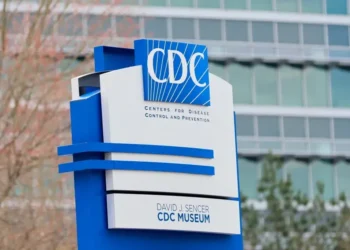Arizona Reports Rare Death from Pneumonic Plague — Should You Be Worried?
An Arizona resident recently died from pneumonic plague — the first death of its kind in the state in nearly 20 years. While the word “plague” might sound like something out of a medieval history book, this case is a modern reminder of a rare but serious disease that still exists in some parts of the U.S.
Here’s what you need to know about this rare infection, how it spreads, and how to stay safe.
What Is Pneumonic Plague?
Pneumonic plague is a lung infection caused by Yersinia pestis, the same bacteria behind the Black Death in the Middle Ages. But unlike the bubonic plague, which affects the lymph nodes, pneumonic plague attacks the lungs — and it’s the only form that can spread from person to person.
According to Dr. Leana Wen, a health expert at George Washington University, there are three types of plague:
- Bubonic (most common): affects lymph nodes
- Septicemic: spreads through the bloodstream
- Pneumonic: infects the lungs and spreads via droplets from coughs
The Arizona case involved the rarest type — pneumonic — which can be especially dangerous if not treated quickly.
How Does It Spread?
Most people catch the plague from the bite of an infected flea or by handling animals like rodents or outdoor cats that have the bacteria. In the case of pneumonic plague, the bacteria can also spread through the air — such as when an infected person or animal coughs.
This makes early detection and treatment very important, especially in rural areas where the disease is more likely to appear.
What Are the Symptoms?
All three types of plague come with general symptoms like:
- Fever
- Headache
- Chills
- Weakness
But each form has unique signs:
- Bubonic: swollen, painful lymph nodes (called “buboes”)
- Septicemic: can lead to shock and organ failure
- Pneumonic: causes shortness of breath, chest pain, and coughing
Pneumonic plague can get worse very fast — making it the most serious version.
How Is It Diagnosed and Treated?
Doctors test blood, spit, or tissue from swollen lymph nodes to confirm the infection. But because the disease moves quickly, treatment often starts before results come back.
The good news? Plague is treatable with antibiotics like gentamicin or fluoroquinolones — especially if caught early. Without treatment, the disease can be deadly, but with quick medical care, most people recover fully.
Is There a Vaccine?
There used to be a vaccine for high-risk workers, but it’s no longer available in the U.S. because the disease is now so rare. However, researchers are working on new vaccine options.
How Can You Stay Safe?
If you live in or visit areas where plague has been reported — like parts of Arizona, New Mexico, or Colorado — here are some ways to reduce your risk:
- Avoid wild animals, especially rodents.
- Don’t touch sick or dead animals.
- Keep fleas off pets with vet-approved treatments.
- Use insect repellent (with DEET) when hiking or camping.
- Store pet food securely to avoid attracting rodents.
- Watch your pets for signs of illness, especially if they go outside.
Dr. Wen also reminds us that the plague is extremely rare in the U.S. — with only about 7 cases a year, most of which are bubonic and not contagious.
Should You Be Concerned?
If you’re not living in an area where plague is known to appear, there’s little reason to worry. Even in Arizona, health officials say the risk to the public is very low. But if you’re traveling to rural parts of the western U.S., it’s a good idea to take some simple precautions — and see a doctor if you notice unusual symptoms after spending time outdoors.
This single case is a reminder to stay informed — but not alarmed.
This article was rewritten by JournosNews.com based on verified reporting from trusted sources. The content has been independently reviewed, fact-checked, and edited for accuracy, neutrality, tone, and global readability in accordance with Google News and AdSense standards.
All opinions, quotes, or statements from contributors, experts, or sourced organizations do not necessarily reflect the views of JournosNews.com. JournosNews.com maintains full editorial independence from any external funders, sponsors, or organizations.
Stay informed with JournosNews.com — your trusted source for verified global reporting and in-depth analysis. Follow us on Google News, BlueSky, and X for real-time updates.













